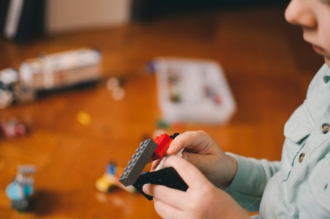Recently, I met a journalist friend for coffee. She was visibly stressed. I asked what was wrong and she told me she’d just interviewed a story subject. It was her dream assignment, to craft a profile of this person. But the interview didn’t go well.
The interviewee had requested that the interview not be recorded. My friend explained that without the aid of her usual recording app (which also transcribes the interview), she was scribbling notes the entire time. She barely looked up from her notepad. She felt less engaged with the interviewee. She wasn’t able to establish the necessary rapport to dig into more sensitive subjects. As a result, she feared that the profile would fall flat.
I couldn’t help but sympathize with my friend — it was hard to see a way around her dilemma. Hopefully, I thought, she’d be able to reconnect with the interviewee and ask a few additional questions.
After our coffee, I got to thinking about automation and AI tools. We use them all the time, for everything from scheduling emails to transcribing meetings. As their role continues to expand in our work lives, many fear that technology and AI will displace humans. To an extent, they will. As Nilay Patel wrote for The Verge, “If you have the kind of job that involves sitting in front of a computer using the same software the same way every day, automation is coming for you. It won’t be cool or innovative or even work all that well — it’ll just be cheaper, faster, and less likely to complain.”
But there’s a caveat: there will always be jobs that only humans can do. What’s more, automated tools can also enable us to be more, not less, human in our work. They can help us better connect with the people with whom we work. They can make our jobs more human-centric.
As CEO of Jotform, I’m a vocal advocate for automation — I even wrote a book on it. I’m constantly looking for new ways to incorporate automated tools and processes into my work because they free me to concentrate on more important tasks — those involving creativity, strategizing, and a genuine connection. The way I see it, automation can be a powerful force in enhancing the human touch. Here’s how.
Less stress and anxiety
When I write about automation, I focus largely on busywork — the type of manual, repetitive, recurring tasks that require little-to-no personal input. When we automate those tasks and clear them from our to-do list, we have more time to focus on more meaningful tasks. These are oftentimes the activities that demand concentration and engagement. They enable us to enter a “flow state.”
Coined by psychologist Mihaly Csikszentmihalyi, flow is “a state in which people are so involved in an activity that nothing else seems to matter; the experience is so enjoyable that people will continue to do it even at great cost, for the sheer sake of doing it.” Csikszentmihalyi found that individuals were their most creative, productive, and happy when in a state of flow.
What’s more, achieving a flow state has benefits beyond the immediate experience — it balances cortisol and stress levels afterward as well. In sum, automation empowers us to achieve more flow and as a result, feel less stressed.
It can also go a long way toward reducing anxiety by calming the internal voice that worries about the million and one ways that daily tasks can go awry. You know the voice — it’s the one that asks:
Will this email marketing campaign actually reach my customers?
What happens if my laptop crashes while I’m finishing the logo?
Automation is like knowing that the stove really was turned off when you left home. You don’t have to check. You don’t have to ruminate.
In my book, I include a list of various tools for automating your peace of mind. For example, you’re worrying about whether your email marketing campaign is actually being read. Solution: Tools like Clearout and ZeroBounce enable you to automate bulk emails and improve your open rates.
Importantly, when you’re less stressed, you’re better able to perform the work that requires your unique talents and human touch.
Fewer errors in human interactions
If there’s one unavoidable thing about being human it’s that we make mistakes. Automated tools, on the other hand, don’t get tired, bored, or distracted. Once you put them in place, they can be even more reliable than us and circumvent the everyday hiccups that can strain human relationships.
Take meetings: using an application like YouCanBook.Me, you can avoid double-booking a meeting, and save time and frustration for you and your colleagues. Or say you’re collaborating on a project and want to make sure all the attendees at an upcoming meeting have the relevant documents. With a tool like Zapier, you can create new communal folders, documents, or spreadsheets. That way, no one is left feeling out of the loop.
At Jotform, automated tools help us to ensure that everyone is on the same page. I’ve found that when roles and expectations are clear, everyone can concentrate on the work that matters.
Improved quality of communication
Finally, automation can help to foolproof communication. Maybe you’ve heard about #ReutersReplyAllGate — that time when a Thomson Reuters staffer responded to a company email using the “reply all” button — and accidentally sent a message to 33,000 of his fellow employees. It set off a firestorm of “reply all” responses, some expressing their frustration and others chastising colleagues for committing the same offense. The count hit over 600 messages before the thread came to an end.
The takeaway? Even Thomson Reuters, a multinational media conglomerate in the business of communication, is susceptible to communication blunders.
Automated tools can prevent embarrassing errors like the Reuters debacle, for example, by removing the Reply All button if your email provider permits, or giving yourself an “Oh no!” window of 60 seconds. Automation can also eliminate countless daily check-ins, circle-backs, and status updates. Importantly, that clears the way for high-value communication, where teams innovate and people truly connect.
Final thoughts
As New York Times tech columnist Kevin Roose told The Verge:
“When the robots come into your workplace, the stuff that’s left is the stuff that the robots can’t do. So, I was trying to figure out, what can’t the robots do? What is only done by humans right now, and what is likely to only be done by humans into the future?”
At first blush, embracing an automation-first mindset may seem like you’re submitting to the software — putting up the white flag and accepting that automation will displace you. But really, the goal is to learn how to incorporate automation into your work and free yourself to do more of the things that move the needle for your career and your business. The stuff that only you, a human, can do.












Send Comment: